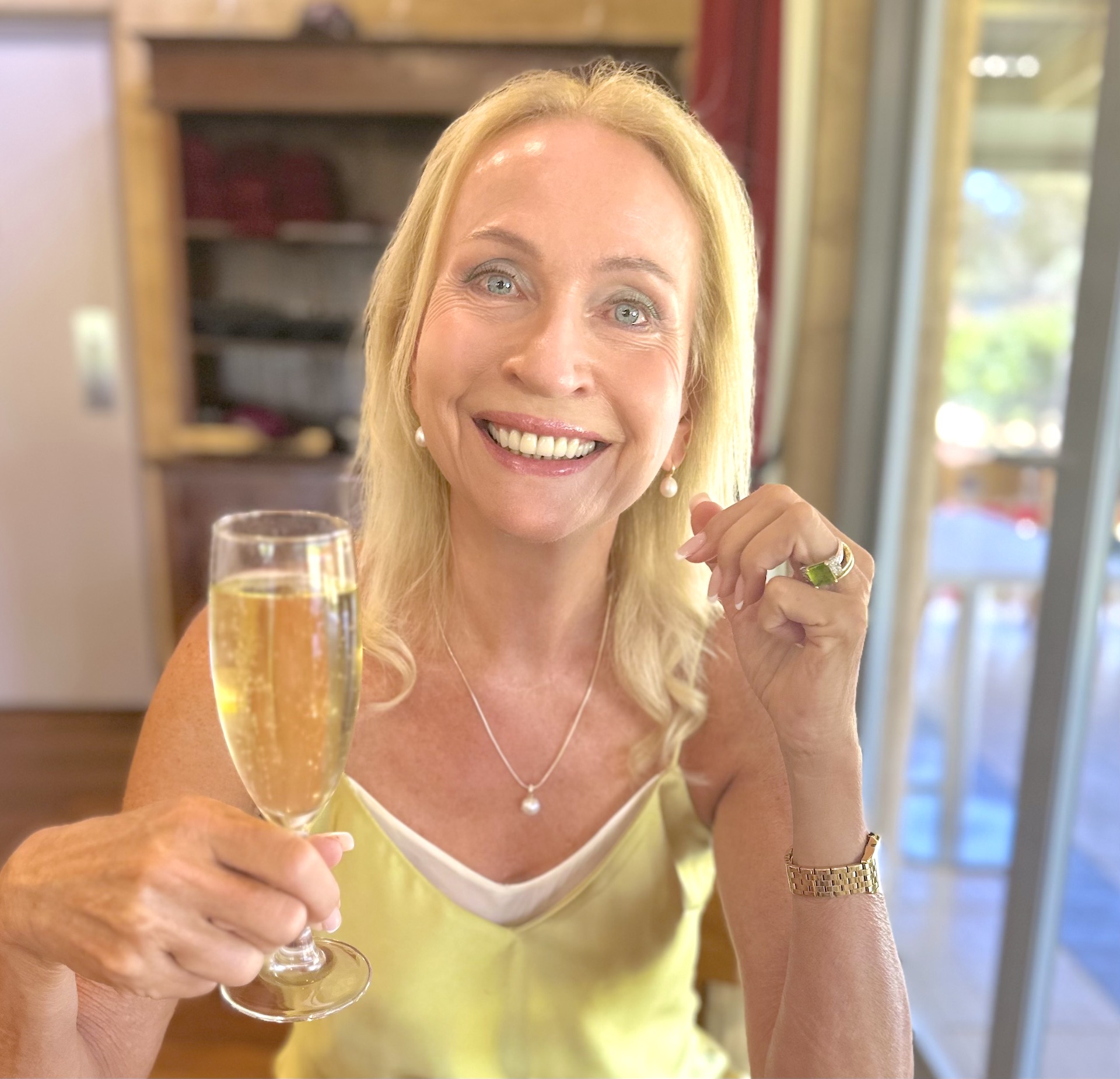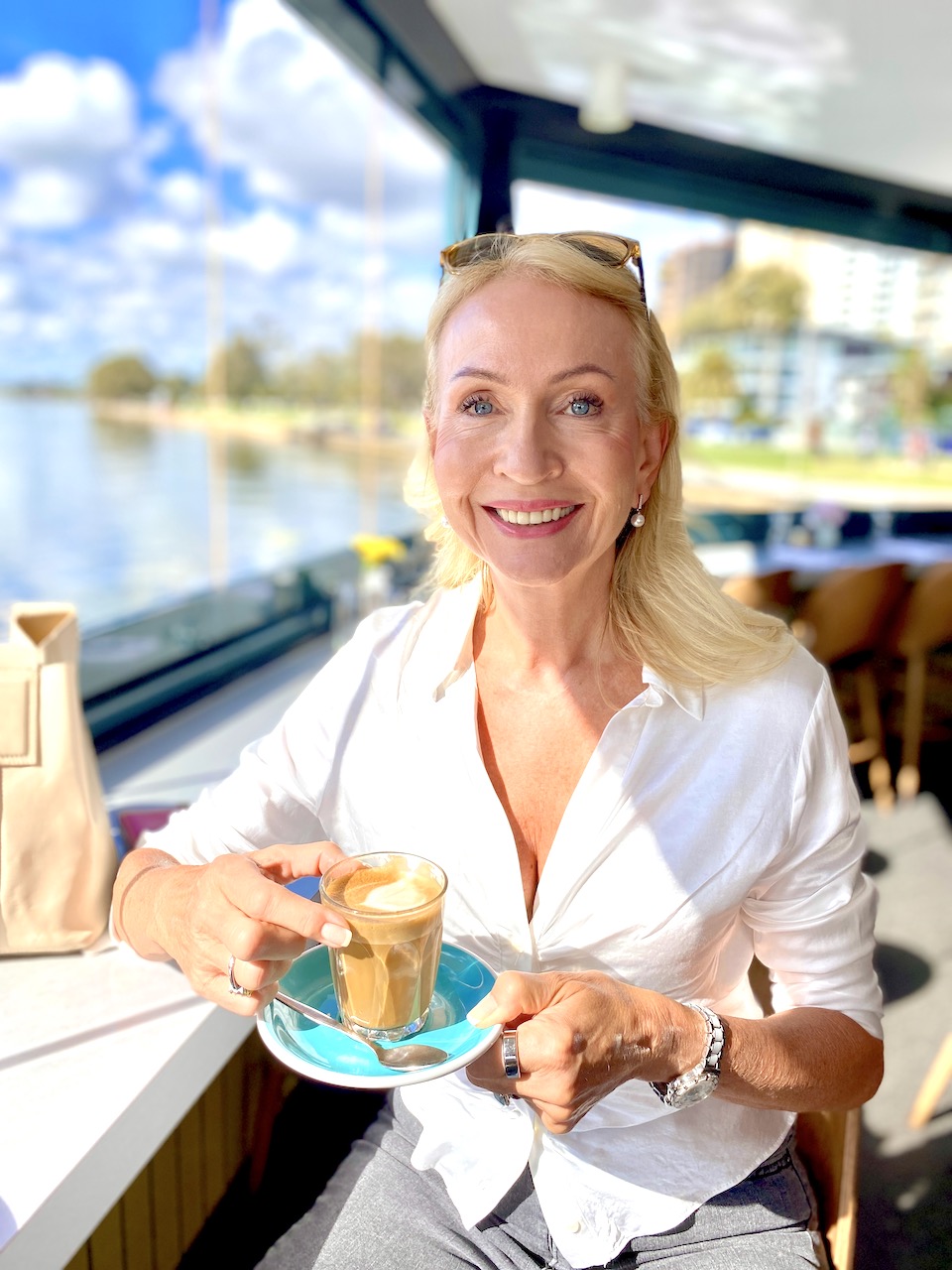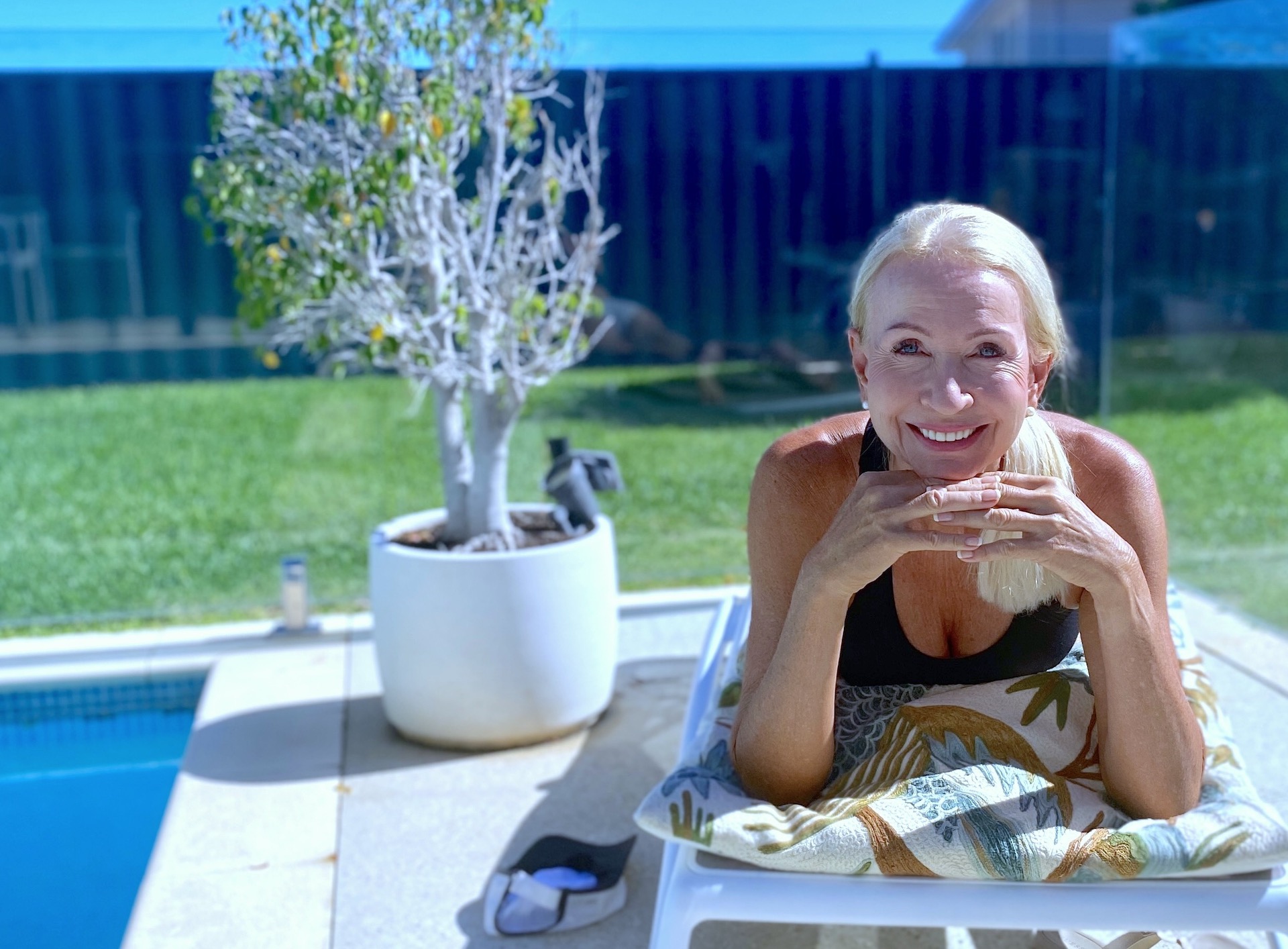Get more collagen, says VERNE MAREE! Working to keep your skin taut and healthy and your musculoskeletal system strong, collagen is the body’s most abundant protein.
When my dear friend Christa suggested I do a blog on collagen – maybe marine vs bovine – I thought, why not? Call me strange, but collagen is in fact something I think about most days: whether I’m adding collagen powder to a smoothie, making bone broth, or, sadly less frequently, booking a collagen-boosting facial treatment.
For me, collagen is about both looking young and staying strong.

Vanity
Plump, youthful-looking skin relies on the elasticity that collagen gives it, and as we start to produce progressively less collagen from our 30s onwards, skin begins to thin, sag and wrinkle. Kickstarting your own flagging collagen production is the mechanism underlying all those beauty clinic treatments*, from laser and IPL (intermittent pulsed light) to ultrasound (e.g. Ultherapy), radiotherapy (e.g. Thermage), fat transfer, and even facial peels.
- Full disclosure: I’ve been lucky enough over the years to undergo and review all these treatments and more, thanks to my editorial role (2005 onwards) at Expat Living Singapore magazine and website. If not for that, who knows how low my jowls might have been hanging by now? Thanks for all the amazing health, beauty, travel and dining opportunities, EL!
Strength and Fitness
Strong bones, joints, tendons and ligaments rely on collagen for their elasticity. When it comes to skeletal health, mineral density as measured in a bone densitometry (DEXA) scan is only part of the picture. Diagnosed 13 or 14 years ago with osteopaenia and osteoporosis (porous, fragile bones) in my hips and spine respectively, this is something I take very seriously.
First of all, I try to get as much collagen as I can from food. It’s a brilliant excuse to splash out on a couple of grass-fed oxtails, as I did just last week. It may be ridiculous to be slow-cooking oxtail when it’s a sweltering 38 degrees Centigrade outside, but the body knows what it wants. (What’s air-conditioning for, anyway?)
Collagen from Real Food
Is Oxtail Better than Sex?

In fact, all those slow-cooked, tougher cuts that Roy and I love so much – oxtail, osso bucco, short rib, lamb shanks, neck* and so on – are a great source of collagen. That sticky, gelatinous mouthfeel from dissolving connective tissue is the giveaway, and it only comes from long, slow cooking. Actually, it doesn’t even have to be slow… if you’re in a hurry, there’s always the pressure cooker.
*With due apologies to my vegetarian friends and readers. And no, there is no vegetarian or vegan source of collagen, except for what the body can make for itself.

Me and my Kitchenette
Since Roy and I have been locked down in Western Australia – just over two years! – I have not had a proper kitchen of my own. Instead, every meal comes from the tiny kitchenette in our part of son Carl and Carrie’s house. It was never the plan… but who could’ve guessed that our accustomed freedom of movement (speech, assembly, bodily integrity, etc.) would be so abruptly curtailed?
Anyway, we’ve made it work. Instead of a proper stove, I have two glass induction hot plates that I bring down from a cupboard when I need them; another cupboard conceals a microwave-convection oven, which has been fantastic. And these are my first ever slow-cooker and pressure-cooker – they live with the pots in a drawer, and have been incredibly useful. Also convenient is the outdoor barbecue: you can imagine how messy it would be to do certain kinds of cooking in what is essentially our living-room – not to mention blocking Roy’s view of the telly…

Broth
The very best source of collagen is bone broth made from fish, chicken or beef. I use chicken bones four out of five times; beef or lamb bones the rest of the time.
As for fish broth, I think fondly back to our Singapore days, when I used to buy a whole Norwegian salmon from the fishmonger at FairPrice Finest. He or she would fillet it for me – enough for at least five meals – and package the head, fins and backbone for me to take home, where I’d turn them into a fabulous broth base for seafood soup. It’s never occurred to me to ask for that here in WA, for example at Farmer Jack’s. But maybe I should: plenty of Southeast Asians live here!
My collagen-rich broth recipe
Unless you’re prepared to have your home redolent with the pong of boiling bones all day and/or all night, a pressure-cooker is the way to go.
- Chuck in two chicken frames (free-range if possible), plus 6-10 chicken necks or chicken feet if you can get them. (Prized in African, Chinese, Southeast Asian and many other cuisines, the tendon-rich feet are beautifully gelatinous. Just don’t let the toenails pierce your lips later, while you’re sucking the tender flesh from their little bones.) Or use the equivalent amount of beef or lamb bones, preferably cut to expose the marrow.

Chicken feet, courtesy of www.thankfulharvest.com - Pour in a good splash of apple cider vinegar to help break down the bones, plus seasoning: a couple of bay leaves, a sprinkle of black peppercorns and two to three teaspoons of Himalayan or sea salt.
- Add one roughly chopped onion, a sliced carrot and one or two sliced celery stalks, and top up the pot with mineral water.
- Pressure cook for an hour – or two, if you really want to leach all the goodness out of those bones and connective tissue. Allow to cool, strain out the liquid and refrigerate it. Pick off the meat if you’re in the mood to do so, and keep it for making soup. Protected by its layer of fat, I find my broth is still fresh after up to a week in the fridge. (More cautious souls might say three days.)

Non-pastured – worth risking?
Chicken should be free-range; meat should be grass-fed; fish should be wild-caught. (There are nuances here, of course.) I’ve found two online sources for local, ethically raised meat. The first is The Naked Butcher (free delivery for $200 minimum order); the second is Dirty Clean Food (free delivery for $100 minimum order) for 100% grass-fed beef and lamb, pastured chicken, wild-caught Australian seafood, and more.
Thing is, no one can vouch for the safety of what comes out of the bones of non-pastured animals. Heavy metals, glyphosate and other chemical toxins tend to be stored in the bones of all badly fed animals (including us humans); and it will eventually come out of those chicken, beef or lamb-bones and into your supposedly healthy broth.
And to answer Christa’s question about marine vs bovine collagen, it is thought that fish collagen peptides may be more easily absorbable and bio-available to us because of their smaller size. According to Dr Axe, marine collagen is absorbed up to 1.5 times more efficiently than collagen from cows or pigs, and has been shown to increase the body’s own natural collagen production. Again, look carefully at the sourcing.
Supplemental Collagen
As with all supplements, quality is paramount when it comes to choosing supplemental collagen. There’s a lot of crap out there, so caveat emptor! – be careful who you buy from, and read the label.

Here’s the collagen powder I buy online from Optimoz.au – Primal Collective Collagen Peptide Protein Powder, made from hydrolysed beef gelatin – and take, though inconsistently. I’m going to be more consistent with it from now on, however, because I’ve just discovered a genetic allergy to cow’s milk; and so the beautiful, creamy whey isolate I’ve been using in our smoothies will have to be Roy’s treat alone. Sob.
(That’s in addition to avoiding gluten; for my blog post on why we’re also mainly gluten-free, click here. And for the basics of my Low Carb, No Crap® nutrition plan, click here.)
Good news is that the hydrolisation process used in the collagen powder makes it tasteless, and instantly mixable in either hot or cold beverages. While it lacks the creaminess of whey isolate, at least it doesn’t affect your smoothie’s flavour one bit.

Why Optimoz?
OK, here we go down another rabbit-hole. I was introduced to Optimoz through the love I bear for biohacker Dave Asprey, of Bulletproof fame. Optimoz sells his* mould-free Bulletproof ground coffee, his Bulletproof Brain Octane C8 MCT Oil, and his Eye Armour supplement for eye health. I ordered the coffee a couple of times (good); the oil is a smoothie staple; and I take the eye supplement religiously. (With eyesight being such a precious and potentially precarious thing, I’d be afraid to stop.)
- Note that Dave is no longer involved with the Bulletproof brand, having sold it; and he says they literally refuse to answer his questions about whether they still use his original formulations. But he “hopes so.”

Optimoz also introduced me to Primal Collective’s fabulous range of products. I use two of them consistently. One is Fat Grass Fed Ghee by Pepe Saya; it’s ghee made from grass-fed Australian cows, and Pepe Saya is famous for his cultured grass-fed butter. (I saw this butter at our fabulous local deli Basil’s, in Mindarie, just this morning; how sad that I have a genetic allergy to cow’s milk.) The other is the aforementioned Collagen Peptide Protein Powder.
Parting Shot
This post is clearly not for the vegetarian or vegan community, as collagen is made from the bones and skins of animals. The bones and skins of carrots, or even beans, will not do the trick.
So, how do vegans, especially, get the collagen they need? From what I can see, they have to rely on their bodies producing it from whatever amino acids they can get from plants – not an easy task. Good advice in this article – A Vegetarian’s Advice to Collagen and Healthy Bones – was to be sure to get plenty of Vitamin C, too. And that’s good advice for the rest of us, too.










Great read, Verne.
Thanks, Mathilda!